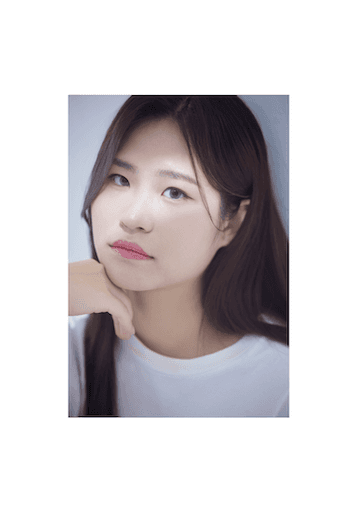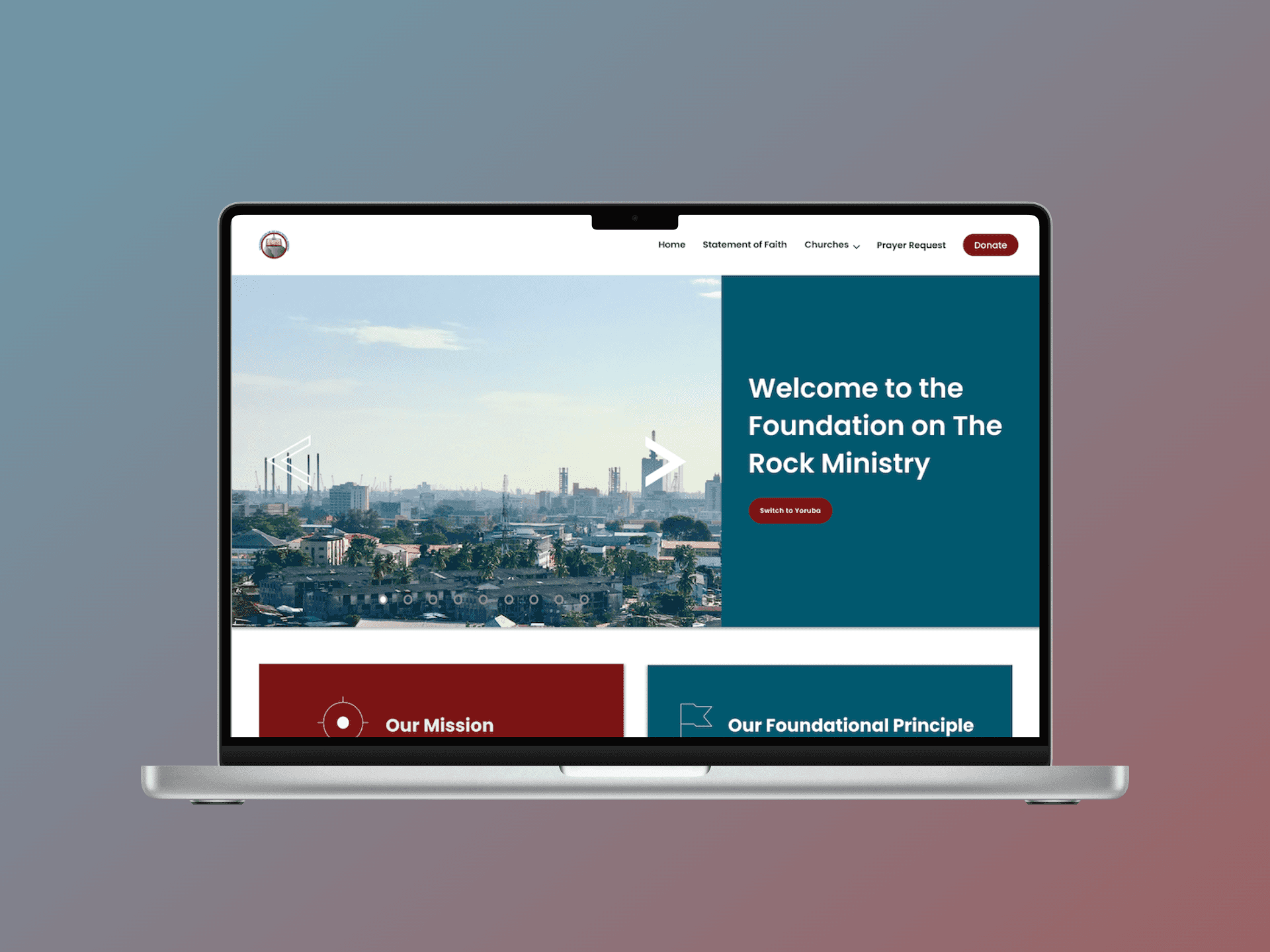Skills:
UX Design, Graphic Design, Problem Solving, Content Writing
Client:
Congregation members across Nigeria
Team:
Women Of Connection IT Development Team
Timeline:
Feb 2024 - June 2024
Goal:
The Foundation on the Rock Churches, with scattered branches, sought a unified digital platform to connect their congregants and expand their reach. Many members of the Nigerian community struggled with existing digital tools due to significant language barriers, slow internet access, and complex interfaces. Our mission was to bridge this gap, creating an accessible and engaging online hub that truly resonated with their unique needs.
The Foundation on Rock Churches needed a unified digital platform to connect its scattered branches and engage members.
Problem:
Many congregants struggled with existing tools due to language barriers, slow internet, and complex interfaces.
How Might We: Design a unified, mobile-first digital platform that overcomes language barriers and low-tech environments to foster deeper connection and engagement within the Nigerian church community?
Research & Discovery
Competitor Analysis:
Visited similar church websites to analyze best practices and potential pitfalls.
Key Insights:
Users prioritized quick access to event schedules, ministry sign-ups, drop-down menu, and image carousel (shown in examples below).
Simplified English and Yoruba translations were critical for inclusivity.

User Interviews:
Method: remote interviews with 3 pastors via phone/email, supported by Yoruba-English translators.
Translated email questions into Yoruba
Shared prototype recordings via email for pastor feedback
Key Insight:

Content Writing: Bridging Language & Literacy Barriers
Crafting advertising content to encourage users to participate in various ministries (Women, Men, Youth, Children).
Writing accessible and culturally relevant content tailored to the Nigerian audience.

Graphic Design and Visual Communication: Accessibility in a Low-Tech Environment
Designed engaging visuals for the church website and promotional materials. To ensure optimal accessibility in challenging environments (e.g., bright sunlight, older devices), I prioritized:
High contrast color palettes for maximum readability.
Large, legible fonts and clear iconography to reduce reliance on text and simplify comprehension.
Incorporated locally recognizable symbols
such as an open Bible (emphasizing scripture's centrality) and uplifted hands (common in Nigerian worship culture) to foster a deeper cultural connection.

Solutions:

Key Design Solutions & Iteration:
Designed a **mobile-first layout**

Website Version

The website is published on WordPress now. Click here.
Multilingual Accessibility- The Language Switch:
This was a core focus. We enabled seamless manual Yoruba translations by native speakers (overcoming the unreliability of automated tools) alongside simplified English for broader reach. A prominent language toggle was strategically placed in the mobile header and website center for immediate and easy switching.
Manual Yoruba translations by native speakers + simplified English for broader reach.
Language toggle prominently placed for easy switching.
on mobile header

on website center

Challenges and Solutions
Language Barrier & Content Accuracy: A significant challenge was the absence of a reliable Yoruba translation tool like Google Translate, often yielding incorrect translations. Furthermore, many pastors had limited education, leading to messages and statements that were not clearly written, making accurate translation even harder.

Solution: We tackled this by relying on
(all context is proofread and manual translated by Yoruba native speakers)

Designing for Low-Tech Environments: The need to cater to an audience primarily accessing the internet via mobile devices with slower connections posed a design constraint.
Solution: This was addressed by prioritizing a mobile-first design philosophy, incorporating clear navigation, large clickable elements, and optimizing image/file sizes for faster loading.
Another challenge was designing for an undeveloped technological environment. The solutions implemented included:
Prioritizing mobile-first design, as mobile devices are the primary means of internet access in Nigeria.
Incorporating clear navigation and large clickable elements for ease of use.
Conclusion
In this project, I navigated multiple roles- UX design, graphic design, and content writing - for the first time, partnering with a developer to implement the final website.
The final church website successfully balanced simplicity and functionality, offering an accessible, easy-to-navigate platform that resonated with the church's audience. The project highlighted the importance of understanding local needs, cultural sensitivities, and technological limitations when designing for an underserved community.


